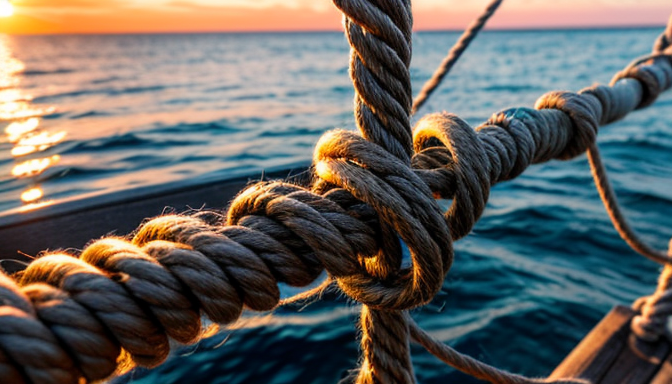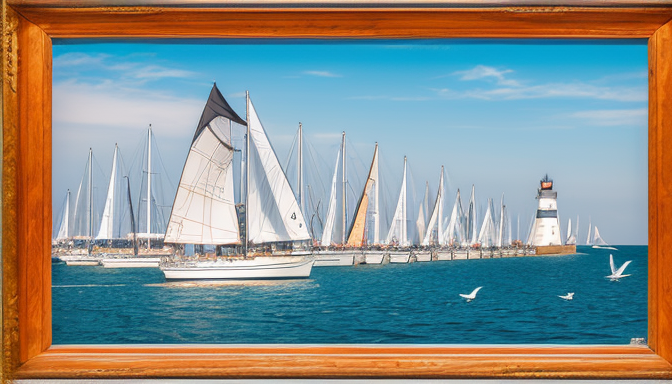The Art of Sailing: Discover Your Inner Navigator
Sailing is not just a mode of transport; it’s an adventure that connects you to nature in a way few other activities can. Imagine the wind filling your sails, the gentle rocking of the boat, and the vastness of the ocean stretching out before you. It’s a feeling of freedom that ignites your adventurous spirit and awakens your inner navigator. To embark on this journey, you need to grasp the essentials of sailing, which includes understanding the wind, water, and the boat itself.
First things first, let’s talk about the basics. Familiarize yourself with key sailing terminology and equipment. Knowing terms like starboard, port, and tacking is crucial as they form the foundation of your sailing vocabulary. Additionally, understanding your boat’s rigging and sails will empower you to make informed decisions while out at sea. Safety is paramount, so always wear a life jacket and understand the weather conditions before setting sail.
As you gain confidence, you’ll want to master navigational skills. This involves more than just following a map; it’s about reading the stars, understanding tides, and using tools like compasses and GPS systems. Each of these elements plays a vital role in ensuring a safe and enjoyable sailing experience. So, are you ready to take the plunge and discover the magic of sailing? With practice and patience, you’ll find yourself not just sailing, but truly navigating the waters with confidence and joy!
Understanding Sailing Basics
Sailing is an exhilarating journey that combines the thrill of adventure with the serenity of the open waters. To truly embrace the art of sailing, it’s essential to understand some fundamental concepts. First off, you’ll want to familiarize yourself with the basic terminology of sailing. Words like bow (the front of the boat), stern (the back), and keel (the stabilizing structure beneath) are just the tip of the iceberg. Knowing these terms will help you communicate effectively with your crew and navigate the waters like a pro.
Next, let’s talk about the equipment. A sailboat isn’t just a floating vessel; it’s a carefully designed machine that relies on various components to function smoothly. Key pieces of equipment include sails, rigging, and navigation tools. Understanding how each component works will set you up for success on your first sailing adventure.
Now, what about safety? This is where seamanship techniques come into play. Always remember to wear a life jacket and be aware of the weather conditions before setting sail. A good sailor knows that the sea can be unpredictable, and being prepared is half the battle. Here are some quick safety tips:
- Check your boat’s equipment before departure.
- Have a float plan and inform someone of your route.
- Stay hydrated and protect yourself from the sun.
With these basics under your belt, you’re well on your way to mastering the art of sailing. So, hoist those sails and let the wind guide you on your adventure!

Navigational Skills for Sailors
When you’re out on the open waters, navigational skills are your lifeline. Imagine sailing as a thrilling adventure where you are the captain of your own ship, steering through the waves with the wind at your back. To truly embrace this journey, you need to understand the basics of navigation. This includes knowing how to read charts, understand compass directions, and interpret the wind’s behavior. Each of these elements plays a crucial role in ensuring you reach your destination safely and efficiently.
One of the first things to master is the use of a compass. This handy tool helps you maintain your course even when the horizon seems to blur. Pair that with navigational charts, which provide detailed information about water depths, hazards, and safe passages. It’s like having a treasure map, guiding you through unknown territories. But remember, charts are only as good as your ability to interpret them! Familiarize yourself with symbols and scales to enhance your sailing experience.
Additionally, understanding weather patterns is essential. A sudden change in wind direction or an unexpected storm can turn your tranquil sail into a challenging ordeal. Keep an eye on the sky and learn to read the signs nature gives you. Safety should always be your top priority. Equip your boat with essential safety gear and familiarize yourself with emergency procedures. This preparation can make all the difference between a smooth sail and a tumultuous one.
In conclusion, mastering navigational skills is about more than just knowing how to steer; it’s about embracing the entire sailing experience. With practice, patience, and a willingness to learn, you’ll soon find yourself confidently navigating the waters, ready to explore new horizons.
Frequently Asked Questions
- What do I need to start sailing?
To embark on your sailing adventure, you’ll need a few essentials: a reliable boat, safety gear, and a basic understanding of sailing terms. Think of it like starting a new hobby; you wouldn’t dive in without the right tools, right?
- How can I learn the basics of sailing?
Learning to sail is like learning to ride a bike; it takes practice! You can take sailing classes, read books, or even watch online tutorials. Joining a local sailing club can also provide hands-on experience and guidance from seasoned sailors.
- What are the key navigational skills I should know?
Navigational skills are your compass to adventure! Start with understanding how to read nautical charts, use a compass, and recognize landmarks. It’s all about knowing where you are and where you want to go, just like planning a road trip!
- Is sailing safe for beginners?
Absolutely! With the right training and safety measures, sailing is safe for beginners. Always wear a life jacket, check the weather, and sail with experienced friends until you feel confident. It’s all about enjoying the ride!






